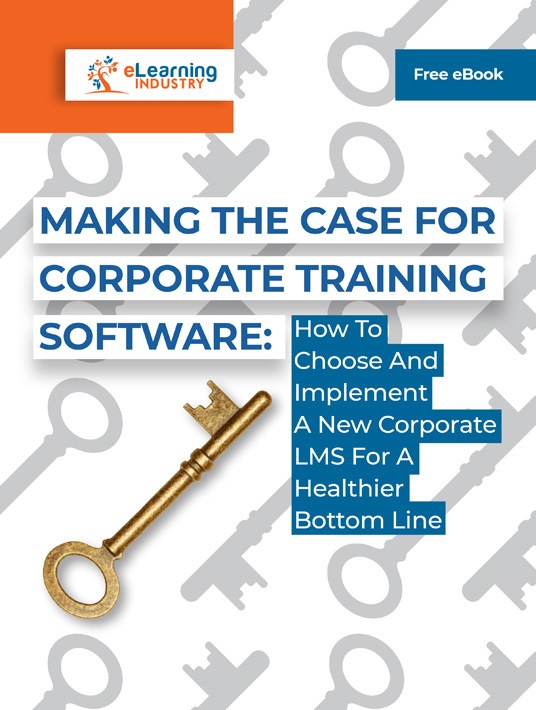Dilemmas Of Corporate LMS: How To Avoid Common Investment And Implementation Hindrances
You want to deploy a corporate LMS to give 24/7 access to your remote workforce. It also gives you valuable Big Data you can use to fine-tune your strategy and personalize the process. The list goes on and on. But there are a few hurdles you must overcome before you can bring all these benefits to your organization. Such as working within your budget, identifying your needs and getting the entire team on board. Here are some insider tips to avoid common investment and implementation mistakes of a corporate LMS that can compromise the health of your bottom line.

1. Create A Realistic Budget That Includes All Hidden Fees
Your budget must account for anything and everything you’ll spend throughout the entire implementation process. Ranging from upfront fees and monthly subscriptions to content creation and ongoing maintenance. One of the biggest mistakes that organizations make when investing in a new corporate LMS is overlooking the hidden expenses. They consider the LMS ownership costs but overlook payroll hours or upgrades. After all, you need time for your team to familiarize themselves with the platform. Just as you need to update the tool to make room for modern tech.
2. Training Needs Analysis Comes Before Vendor Vetting
Many organizations hit the ground running and skip right to the shopping phase. They are so eager to get started that they overlook the importance of a Training Needs Analysis. How do you know what to look for in your new corporate LMS if you are unaware of your current system’s shortcomings? First things first, you must identify the gaps and figure out how your new online training system can improve on them.
3. Define Your Expectations Prior To The Test Drive Of The Corporate LMS
Before you take advantage of free trials and demos, determine what you’re looking for and why. The point of a test drive is to figure out if the corporate LMS is going to meet your needs and help you achieve L&D success. To do this, you must define the scope and criteria for success within your organization. What does your team require from the LMS? Does the platform align with their skills? Are you going to use the system to supplement your ILT program? Which features do you need and how will they help you achieve your objectives?
4. Get Employee Input When Creating Your Implementation Timeline
There’s no doubt that an LMS implementation timeline is crucial. However, you need to get everyone’s input and accommodate to their workflow. For example, your LMS admin or content developers know how long it will take to take care of their respective tasks. Which may be much shorter or longer than you have expected. They can also tell you if there are any projects you need to outsource or additional tools they require.
5. Gather A Team With Diverse Skill Sets And Experience
The team I just spoke of should be comprised of diverse skill sets, talents, and experience levels. Everyone brings something to the table. Even employees with minimal LMS know-how can shed light on the common sticking points. For example, features or functions that may be challenging for co-workers who aren’t tech savvy. You should also conduct surveys or round tables beforehand to assess their capabilities. It’s not unheard of to invite front-end users to join the team in a consultancy capacity. As they bring a fresh perspective and can help you avoid last-minute revisions.
6. Mitigate Risks With A Corporate LMS Implementation Backup Plan
Problems are bound to happen. That’s just the nature of implementing a new corporate LMS. How you deal with these unexpected challenges is what matters. The secret is to stay one step ahead of the issues by creating a backup plan. Meet with your team to compile a list of all potential roadblocks and how you can deal with each respectively. Who will be involved in each contingency plan and which role will they fill? What resources do they need to handle the problem effectively and avoid launch delays? This is also a good time to identify any leftover hidden fees that you overlooked during the budgeting phase.
7. Launch An LMS Marketing Plan In Advance To Lessen The Learning Curve
There is going to be some kind of learning curve. The goal is to get it as low as possible so that the uptake process doesn’t last weeks. Launch an LMS marketing plan well in advance to help employees get used to the new online training system. Provide tutorials on how to access the platform and personalize the dashboard. Host live events that highlight the benefits and give employees an opportunity to test it out. You can even post sneak preview content so that they get a feel for the layout and navigation. This also builds the excitement so that they’re more motivated when you do launch your online training program. They know what to expect and aren’t afraid to dive in and expand their knowledge base.
These are just a few of the obstacles you may encounter when investing in and implementing a new corporate LMS. Every organization is unique. Which means that you need to plan ahead and identify hidden risks. Then work with your team to mitigate them. However, this article can help you avoid the most common pitfalls to ensure that you maximize ROI and resource allocation.
Getting new hires into the flow of your work-place is an essential corporate undertaking. How can you be sure you get it right? Download our eBook Making The Case For Corporate Training Software: How To Choose And Implement A New Corporate LMS For A Healthier Bottom Line and discover all you need to know so you can choose and implement a new corporate LMS.









